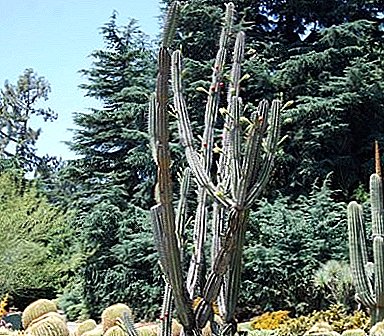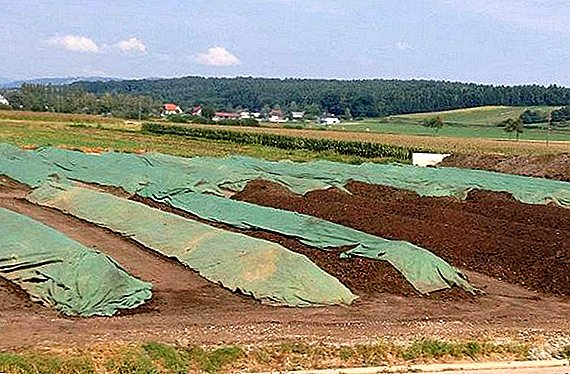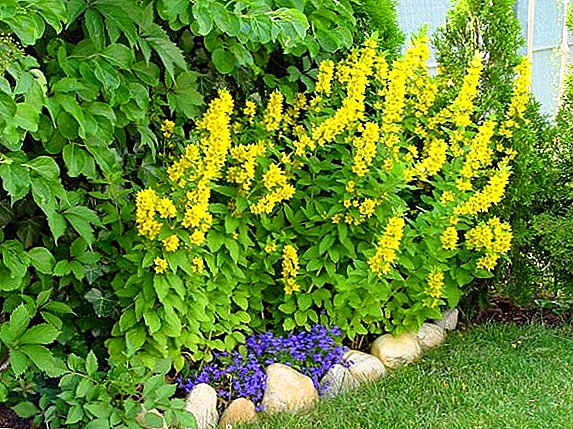
For many years, cacti have not ceased to lose popularity among gardeners. They are still considered one of the most common and favorite indoor plants.
In nature, there are over 3000 species. Some of them are in home culture.
Recently, growers are increasingly preferring the cactus cereus. This flower is quite unpretentious and serves as an ornament to any home interior.
Characteristics and the birthplace of the flower
Cereus - a very ancient and extensive genus of cacti. It combines many varieties and more than fifty species. In nature, these plants are common in India, in the southern and central regions of America.
In nature, a flower can reach more 17-20 meters highand its growing season is about three hundred years.
Cereus has a long branched stem cylindrical shapecovered with numerous prickles. There are low species, high-growing, as well as creeping (those that cling when growing with the help of aerial roots). Cactus grows in hot areas adapted to dry climate and may do without moisture for a long time.
Kinds
Despite the wide variety of species, only a small part is adapted for home cultivation.
Peruvian
 The most common species in the culture.
The most common species in the culture.
It is a plant with a high, powerful, fleshy, gray-green stem, branching at the very base.
Young shoots juicy, green-blue color and wax bloom. With age, the shoots become woody.
The stem is divided into 5-8 ribs, along which areola with red-brown spines.
In nature can reach more than 12 meters high, in home culture no higher than 3-4 meters.
According to the modern classification Cereus Repandus, which many biologists considered a separate species, refers to the synonym cactus Cereus Peruvian.
Yamakaru
Tree cactus with a fairly powerful, dense, fleshy stem, branched at the very base. Reaches half a meter in height. Stem endowed with high ribs, which with age become lumpy.
The areola may be yellowish or brown. Radial and central spines are long, up to 8-10 cm in length.
Flowers Sterius Yamacaru largegreenish white bloom at night.
Uruguayan
Plant with a columnar stem, reaching fifteen meters in height and one and a half meters in diameter.
Stem endowed with 5-8 ribs with a waxy bluish bloom. Covered with numerous, sharp, brown spikes 1.5-2 cm in length.
Blooms late. Flowers are beautiful, large, diameter 13-15 cm, outside is red and white inside. The species has excellent drought tolerance.
Monstrose (rocky)
 A plant with a very unusual, bizarre form, and this draws attention to itself. Endowed with branching green-blue stems and unequal ribs forming intricate shapes.
A plant with a very unusual, bizarre form, and this draws attention to itself. Endowed with branching green-blue stems and unequal ribs forming intricate shapes.
On randomly located ribs and tubercles areola are located with thorns and needle-shaped spines of brown color.
In its natural habitat, a cactus can reach 5 meters in height. At home, growing slowly.
Adult height comes to 1-1.5 meters.
This species prefers a warm wintering. Some flower growers believe that this species belongs to the monstrous form of Cereus Peruvian.
Strauss
Cactus with graceful stem in the form of a straight column. From above it is completely covered with numerous, light, thin spines. Blooms late. The special form of the stem helps to store moisture better and to do without it for a long time. Homeland plants - semi-desert of America.
Below in the video you can learn more about the variety of types of Cereus
A photo
In the photo you can see the bright representatives of the Cereus cactus species, such as Peruvian, Monstrous (rocky):





Home care
Cereus - plant enough unpretentious.
Even a beginning florist will be able to learn how to care for him.
Features care after purchase
Proper plant care begins with repotting. Unfortunately, many do not pay attention to this and subsequently face problems. Before buying a flower, take care in advance of purchasing a suitable container and substrate.
- Capacity Selection
The pot is matched approximately on 1 size larger than previous. Capacity should not be deep, but wide. The root system of the flower is weak.On bottom it is necessary to fill drainage.
- Soil selection
The best option is to buy a ready mix for succulents and cacti. Independently prepare the soil from turf and leaf land (in equal proportions), add brick chips, sand and peat.
Lighting
 Cereus loves good lighting.
Cereus loves good lighting.
The best place for a flower in the house - open, light sills facing south.
In summer, in warm, sunny weather, take a flower to the open air.
So he aired and basked in the sun.
With a lack of light in the winter is recommended to take care of additional artificial lighting.
The flower reacts negatively to a lack of light.
Pay attention to the fact that the plant is sensitive to changes in the situation, to change the lighting.
Temperature
In the spring and summer, the cereus will be comfortable in a room with warm or moderate temperature (20-25 degrees). In winter, there is a period of rest.
Air humidity
Additional moisture plant is not required. Only on hot summer days it is possible to spray it with water in order to slightly refresh and remove dust.
Watering
Watering should be regular in summer and autumn.but moderate. The lack of moisture tolerates the plant is not bad, and an overabundance can lead to the formation of root rot. In the autumn, watering is gradually reduced.
In winter, the flower is not watered..
Fertilizers
 In its natural environment, the cactus grows on the soil depleted in nutrients, so it is well adapted for growing without special dressings.
In its natural environment, the cactus grows on the soil depleted in nutrients, so it is well adapted for growing without special dressings.
If you want to feed the plant, it is recommended to do it only in summer and not more than one 3-4 weeks.
It is better to use special fertilizers for succulents and cacti.
Bloom
Deadline falls for spring and early summer.
For the beginning of flowering is especially important to observe the proper care in a period of rest.
During flowering, it is recommended to slightly increase the frequency of watering.
Transfer
Cereus transplanted in March or early April.
Note that the flower has a very fragile, weak root system. Be careful when removing it from the pot. Adult plant is better to transplant together, so as not to damage.
Breeding
Most often cactus propagated by cuttings. Before planting, they are dried for several days and then dipped into a wet substrate.
The stalk must be fixed in a vertical position until it takes root.
Seed propagated less frequently. This process requires a lot of time and effort.
Diseases and pests
 With good, regular care, plant health problems do not arise.
With good, regular care, plant health problems do not arise.
- An excess of moisture can lead to root rot formation. Disease insidious. It is very important to detect it in time and transplant the flower, otherwise it may die. When transplanting the roots carefully inspected, washed, cleaned from rot, remove the affected parts, treated with a weak solution of potassium permanganate. It is also recommended to sanitize. pot and fresh substrate.
- Rocky Cereus may be affected red tick. Clear from him a cactus problematic. It is necessary to carefully treat all the pits, folds, tubercles.
You can handle a cotton swab dipped in alcohol.
If this does not bring results, you can use special chemicals.
Cereus is one of the unusual and popular species grown in home culture. It differs not difficult care, good immunity from pests, unusual exotic appearance. With regular care, the flower can become a real decoration of any modern apartment.












